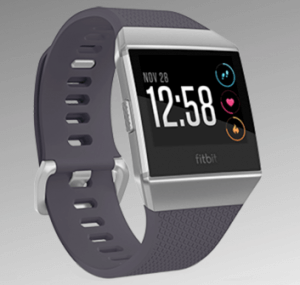![]() Google announced that their latest Feature Drop is here, and it’s jam-packed with helpful tools and updates for your Pixel Phone, Pixel Watch and Fitbit devices. These began rolling out yesterday, and will continue over the next few weeks.
Google announced that their latest Feature Drop is here, and it’s jam-packed with helpful tools and updates for your Pixel Phone, Pixel Watch and Fitbit devices. These began rolling out yesterday, and will continue over the next few weeks.
For Pixel Phones
Peace of mind from Google Assistant: Use your voice to ask Google Assistant on your Pixel phone to start emergency sharing or to schedule a safety check for some extra piece of mind. If you’re out for a night run, just say “Hey Google, start a safety check for 30 minutes.” If you don’t respond to your safety check in the set duration, your emergency contacts will be notified and your real-time location will be shared.
Added safety on the road: Car crash detection on Pixels has helped keep drivers safe since launching in 2019, and now it can even keep loved ones in the loop if you’ve been in a severe crash. In addition to contacting emergency services, it can share your real-time location and call status with your emergency contacts.
Stunning videos, down to the smallest detail: Pixel Pro’s Focus is now available for video, so you can have larger-than-life videos of the smallest details, like butterflies fluttering or flowers waving in the wind.
Easier hands-free photos: Pixel 6 and newer phones will now let you take self-timed photos by simply raising your palm to trigger the timer after setting it for 3 or 10 seconds.
Express yourself with wallpapers that wow: Now on Pixel 6 and newer phones, you can bring your favorite memories of friends and family to life with Pixel’s new cinematic wallpapers. Pixel uses AI to transform your 2D wallpaper photos into dynamic 3D scenes for a truly magical look. And with new emoji wallpapers, you can also mix and match over 4,000 emoji with different patterns and colors to create live wallpapers that fit your personality.
Recorder speaker labels are even better: Recorder makes transcribing recordings a breeze with speaker labels. Starting next week, users with Pixel 6 and newer phones will be able to export transcripts into Google Docs, generate speaker-labeled video clips and search for speakers within recordings.
Quick access to smart home controls: Quickly access your favorite home devices right from your Pixel lock screen when using the Google Home app. Use the designated home panel to turn off lights, adjust the temperature, see your cameras and more.
Smarter haptics: For Pixel 6a and Pixel 7a, Pixel’s adaptive haptics can now lower its vibration intensity when it detects that it’s on a hard, flat surface like a desk of table.
Charging that adapts to your habits: Adaptive Charging now uses Google AI to help extend the lifespan of your Pixel battery. When you plug in your phone, it can predict a long charging session based on your previous charging habits, and slowly charge to 100% one hour before it’s expected to be unplugged.
New Google Assistant Voices: Google Assistant now sounds more natural and relatable to even more users with two new options to add to our diverse array of voices, totaling 12 in U.S. English.
In addition, Google has also introduced new features for Pixel Watches. For example, Pixel Watch will now be able to check your oxygen saturation (SpO2) and help you identify the changes in the level of oxygen in your blood while you are sleeping. There are also new features for Fitbit Devices
To me, it sounds like some of these features included in the Pixel family can make life easier for people with certain disabilities. Hands-free photos, an easy way to record speakers, and smart access to home controls are all a great place for Google Pixel to start with.

 Fitbit
Fitbit  Fitbit announced that it has entered into a definitive agreement to be acquired by Google LLC for $7.35 per share in cash, valuing the company at a fully diluted equity value of approximately $2.1 billion. The transaction is expected to close in 2020, subject to customary closing conditions, including approval by Fitbit’s stockholders.
Fitbit announced that it has entered into a definitive agreement to be acquired by Google LLC for $7.35 per share in cash, valuing the company at a fully diluted equity value of approximately $2.1 billion. The transaction is expected to close in 2020, subject to customary closing conditions, including approval by Fitbit’s stockholders.














